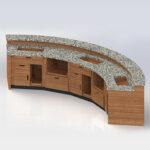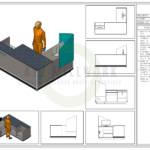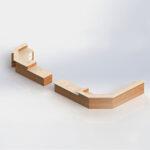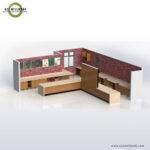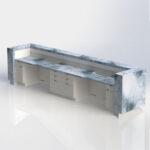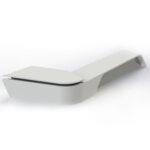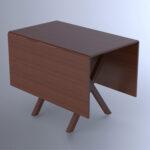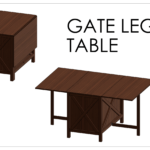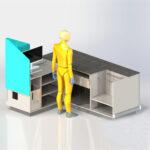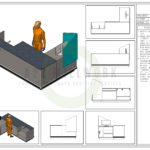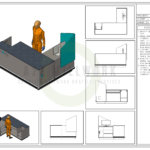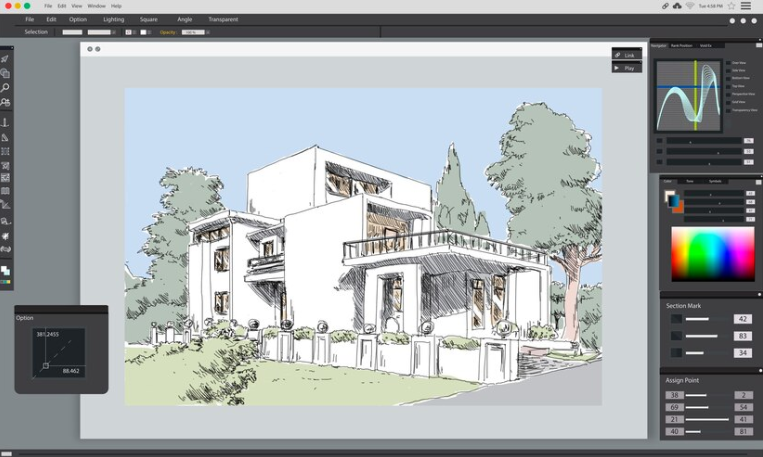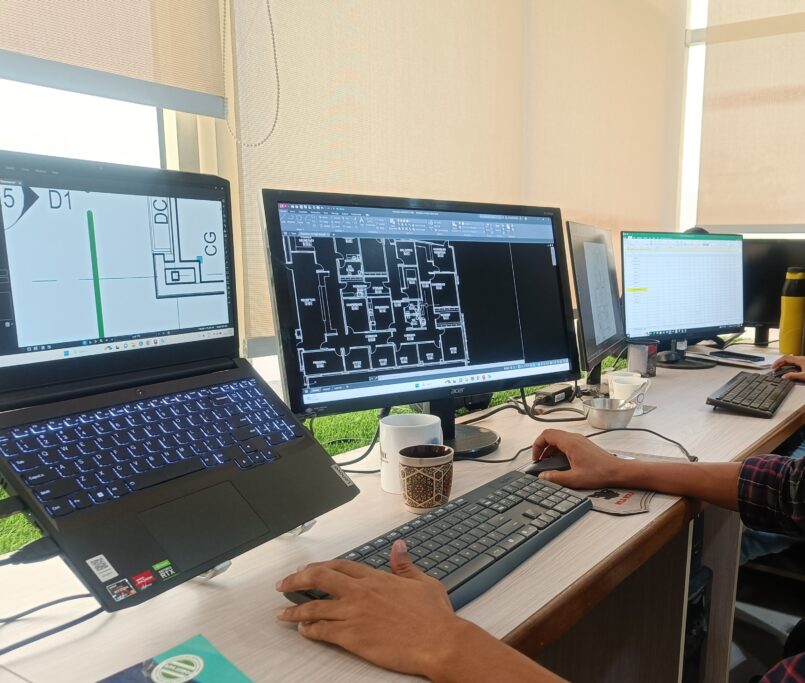In the ever-evolving world of architectural design and construction, innovation is the key to staying ahead of the curve. One such groundbreaking development is the integration of architecture animation in the millwork industry. This transformative technology is reshaping the way architects, designers, and contractors visualize and communicate their ideas. In this blog, we will explore the concept of architecture animation and its profound impact on architectural shop drawings.
Architectural Shop Drawings: The Blueprint of Precision

Architectural shop drawings are the unsung heroes of the construction and design world, serving as the intricate blueprints that bridge the gap between a designer’s vision and the final built structure. These meticulously crafted documents are a vital component of the construction process, offering precise details and specifications that guide contractors, manufacturers, and craftsmen in executing architectural designs accurately.
At their core, architectural drawings are highly detailed technical illustrations. They provide in-depth information about various elements of a construction project, including millwork, cabinetry, fixtures, structural components, and more. These drawings encompass essential details such as dimensions, materials, finishes, hardware, and assembly instructions. They go beyond conceptual sketches and renderings, offering a granular level of information that is indispensable for ensuring precision in construction.
How Architectural shop drawings serve several critical purposes
Architectural shop drawings are not just technical documents but the backbone of precision and coordination in the construction and design industry. These detailed drawings play a multifaceted role, serving several critical purposes that are instrumental in the successful execution of architectural projects.
Precision and Clarity
One of the primary functions of architectural shop drawings is to provide precision and clarity in the construction process. They serve as a comprehensive guide, leaving no room for ambiguity or misinterpretation of the design intent. Every element, from dimensions and materials to assembly instructions, is meticulously detailed, ensuring that contractors and craftsmen have a clear roadmap for execution. This precision minimizes errors and rework, ultimately saving time and resources.
Coordination and Collaboration
Architectural projects involve numerous stakeholders, including architects, engineers, contractors, and manufacturers. Shop drawings serve as a common language that facilitates coordination and collaboration among these diverse teams. They ensure that all parties involved are aligned with the design vision, reducing the risk of conflicts and misunderstandings. Effective communication through shop drawings enhances project efficiency and helps meet deadlines.
Compliance and Regulations
Compliance with building codes, regulations, and industry standards is non-negotiable in construction. Shop drawings incorporate these crucial aspects, ensuring that the final structure not only meets the design requirements but also adheres to safety and quality standards. Compliance-related details, such as fire safety measures or accessibility features, are clearly outlined in the drawings, making them indispensable for legal and regulatory purposes.
Cost Control and Material Efficiency
Architectural projects often have budget constraints, and efficient resource utilization is key. Shop drawings provide a comprehensive list of materials and quantities required for construction. This information helps control costs by preventing overruns and unnecessary material wastage. Contractors can order materials with precision, minimizing excess inventory and associated expenses.
Quality Assurance
Quality is paramount in architectural projects, and shop drawings contribute significantly to quality assurance. They outline the standards and specifications that must be met during construction. By following these guidelines, contractors can ensure that every aspect of the project aligns with the intended quality, resulting in a final structure that is both aesthetically pleasing and structurally sound.
The Role of Accuracy in Architectural Shop Drawings
The role of accuracy in architectural shop drawings is paramount. These drawings are the foundation upon which construction projects are built, and even the slightest error can lead to costly delays, material wastage, and compromised structural integrity. Accurate shop drawings provide clear, unambiguous instructions for contractors and drafters, ensuring that every element, from dimensions to materials, aligns precisely with the design intent. They serve as a crucial tool for minimizing discrepancies, facilitating seamless coordination among project stakeholders, and ultimately delivering a final structure that meets the highest standards of precision and quality. In the world of architectural shop drawings, accuracy is non-negotiable.
Enter Architecture Animation: A Game-Changer

Architecture is no stranger to innovation, and one of the most significant game-changers in recent years is architecture animation. This transformative technology has ushered in a new era of design visualization, redefining how architects, designers, and clients perceive and interact with architectural projects.
Architecture animation brings static architectural plans to life with dynamic, three-dimensional representations. It empowers professionals to immerse themselves in the design, offering a holistic and intuitive understanding of the proposed space. Here’s why architecture animation is a game-changer
Enhanced Visualization
Traditional blueprints and 2D renderings have limitations when it comes to conveying the full scope of a design. Architecture animation transcends these constraints, offering a dynamic, immersive experience. Stakeholders can explore every angle, see how light interacts with spaces, and gain an in-depth understanding of the design’s spatial relationships.
Realistic Interactivity
With architecture animation, you can interact with the design in real-time. Rotate, zoom, and explore the space from any perspective, providing an unparalleled level of engagement. This real-time interaction allows architects and clients to make informed decisions and explore design variations effortlessly.
Error Detection and Prevention
Architecture animation acts as a powerful tool for error detection and prevention. Design flaws, inconsistencies, or clashes that might go unnoticed in traditional drawings become glaringly obvious in a 3D animation. Early identification of issues prevents costly revisions during construction, saving time and resources.
Client Engagement and Approval
For clients, architecture animation is a game-changer in itself. It allows them to visualize their project’s outcome realistically and engagingly. This fosters a deeper level of trust and confidence in the design, making it easier for clients to approve and move forward with the project.
Streamlined Collaboration
Architecture animation makes collaboration among architects, engineers, contractors, and clients more seamless. It is a universal language that transcends technical jargon, facilitating effective communication and ensuring everyone is on the same page.
Practical Applications of Architecture Animation
Now that we’ve introduced the concept of architecture animation and its potential let’s explore some practical applications of this transformative technology in the millwork industry:
Custom Millwork Design
For millwork professionals, creating customized pieces is a hallmark of craftsmanship. Architecture animation allows designers to visualize and perfect intricate millwork designs with precision, ensuring that every detail meets the client’s expectations.
Space Planning and Functionality
Effective space planning is crucial in architectural design, especially when it comes to millwork integration. Animation enables architects and designers to assess spatial functionality and ensure that millwork elements fit seamlessly within the overall design, optimizing both aesthetics and usability.
Material Selection
Animation facilitates material exploration. Designers can experiment with different textures, colors, and finishes, helping clients make informed decisions about materials that align with their vision and budget.
Collaboration with Contractors
Effective collaboration between architects, millwork designers, and contractors is essential for project success. Architecture animation acts as a common language, making it easier for all parties to understand the design intent and address potential construction challenges before they become costly issues.
Realistic Client Presentations
Engaging clients with a realistic animation of their project can be a game-changer. It allows clients to see their ideas come to life, fostering trust and confidence in your abilities as a millwork professional.
Error Mitigation
Preventing errors in millwork fabrication and installation is paramount. Architecture animation helps identify design flaws or conflicts early in the process, reducing the risk of costly revisions and delays during construction.
Marketing and Portfolio Enhancement
Showcase your millwork projects with stunning, immersive animations in your portfolio. This not only impresses potential clients but also demonstrates your commitment to cutting-edge technology and precision in your work.
Training and Onboarding
Animation can be an invaluable training tool for new team members or contractors working on complex millwork projects. It offers a clear visual reference for understanding project requirements and objectives.
Conclusion: Embrace the Future of Millwork

In the millwork industry, the integration of architecture animation is a game-changer. It’s not merely a trend but a significant advancement that empowers professionals to streamline processes, enhance communication, and deliver superior results. By harnessing this technology, you position yourself at the forefront of innovation, ensuring that your Architectural Shop Drawings meets the highest precision and client satisfaction standards. Stay tuned for our upcoming blogs, where we’ll delve deeper into the technical aspects and best practices of implementing architecture animation in your millwork projects.





